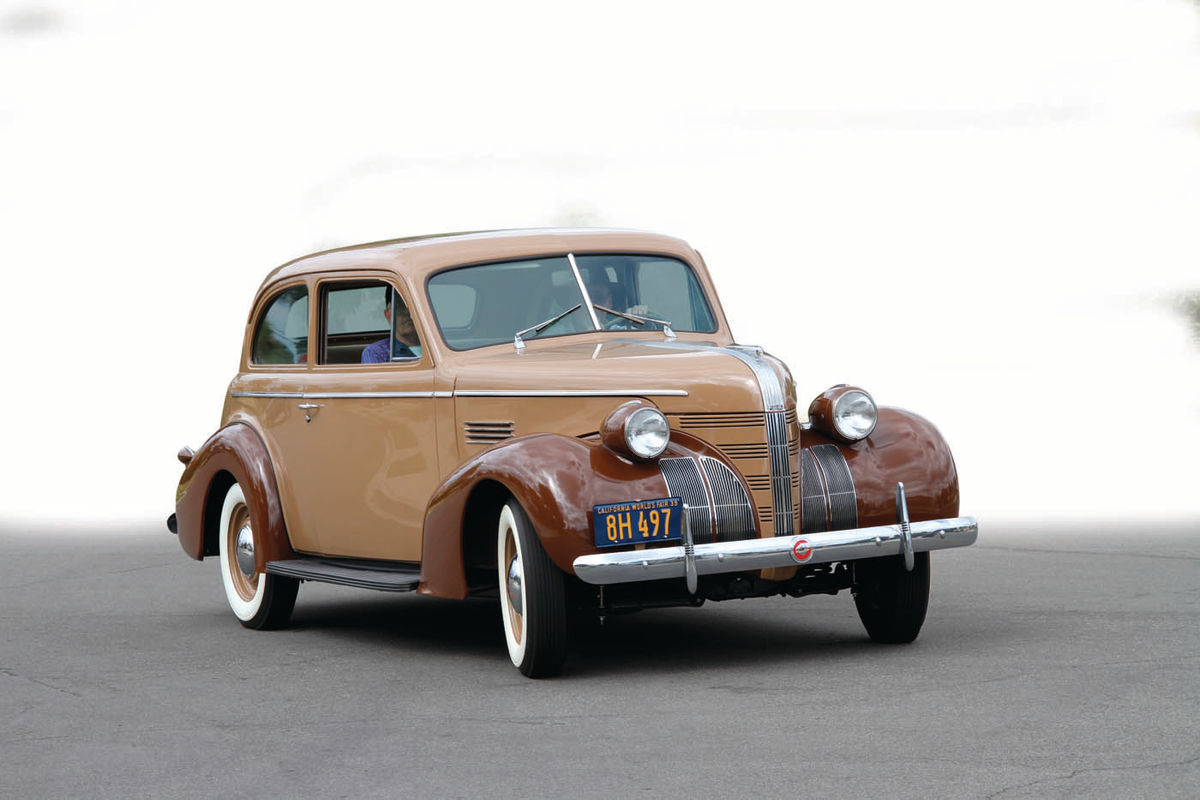1939 PONTIAC DELUXE SIX

It May Not Have the Acceleration of a ’60s Pontiac, But Its Grace and Style Caught His Grandma’s Eye 80 Years Ago.
Dean Starks’ immaculately restored 1939 Pontiac Deluxe Six two-door sedan is everything the later Poncho muscle cars are not. They were brash, flashy, and fast. But unlike the razzle-dazzle Pontiac offerings of the ’60s, Starks’ vintage Pontiac is handsome and understated. It is also very roomy, comfortable, smooth, quiet, durable and dependable.
Dean’s Deluxe Six 26th series Pontiac has been around for 80 years and counting, and it never let his grandma down in all the years she drove it. After her passing it spent a few years outdoors in Arlington, Kansas, heaped with snow in the winter and baking in the sun during the summer but it survived it all. Nonetheless, Starks had his work cut out for him when he decided to rescue it.
There’s Even Room for My Hat
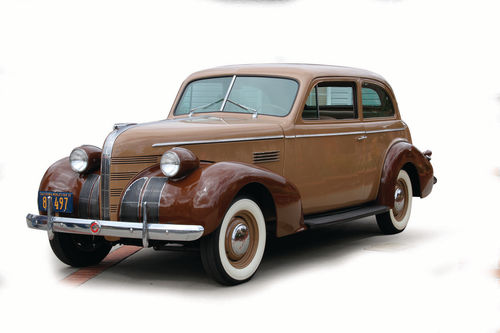
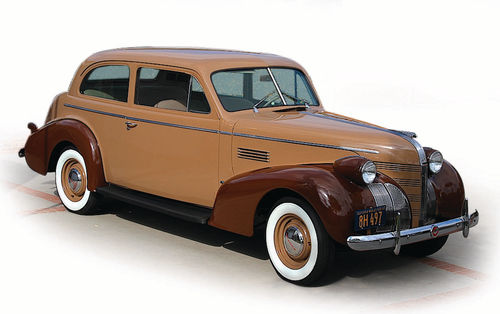
I open the big broad door and slide onto the sofa-like Bedford Cord-covered bench seat. There is plenty of room in every direction. I can even wear my favorite fedora without bumping the headliner and I am over six feet tall. I turn the key, step on the starter pedal and the 222-cubic-inch flathead six turns over a few times indolently, thanks to its six-volt electrical system, in order to get fuel up to the carburetor before coming to life. There is a slight unevenness as the engine warms, and then it settles into smooth silence.
The back seat has even more head and legroom than the front, and is nicely trimmed in a streamline deco motif. You could easily take a nap back there in reasonable comfort, and three people could sit abreast in it and not be cramped.
The Shifter Had Moved to the Column
There is a full array of instruments in the wood grained metal dash that are large and easy to read. The oil pressure, temperature and ammeter tell me that nothing is amiss, and the engine is warming nicely, so I pull the three-on-thetree stick shift into low and we are off. Incidentally, 1939 was the first year for a column shift on most brands, but Pontiac had it in 1938 as an extra cost option if you were safety conscious. The shifting is not as quick and precise but the arrangement is safer in an accident than the long floor shifters of the era.
Pontiac’s Series 26 Deluxe 120 was offered in several body styles. There was a four-door called the Touring Sedan, plus a two-door coupe, sport coupe, convertible coupe, and a two-door touring sedan. Pricing ranged from $815 to about $1000 depending on accessories, and there were a total of 53,830 examples produced during the 1939 model run.
First gear has that familiar Pontiac non-synchromesh whine common to the era, but when I shift into second the transmission quiets down. Acceleration is surprisingly good considering that this deluxe model has the bigger B.O.P. body used also by Buick and Oldsmobile. These more expensive 120- inch wheelbase Pontiacs were marketed as an upgrade from the less-expensive Quality Six line, which had a smaller body and 115-inch wheelbase also used by Chevrolet.
Acceleration Designed For the Times
The good starting acceleration is there because the engine in Dean’s Pontiac was designed to produce abundant bottom-end torque and to cruise at low rpm. Why is that, you might ask. Well, for one thing, high-strung high-speed performance wasn’t important in 1939. Highway 66 was only completely paved that year for its whole length, and the first freeway in the country was opened in Pasadena, California, in 1940 with a speed limit of 45 miles per hour.
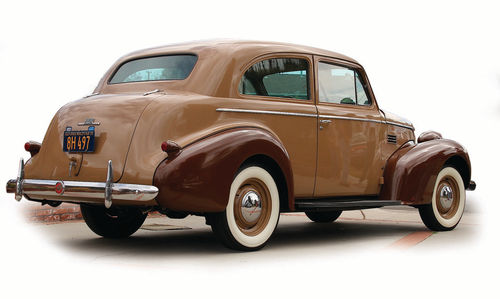
Acceleration in Starks’ Pontiac still would be considered leisurely by today’s standards, but not dangerously so, thanks to the car’s low (numerically high) differential gearing. However, the engine works pretty hard above 50 miles per hour.
Steering is light thanks to the big steering wheel and the newly engineered steering system that was continued all the way into the 1990s. The car rides very smoothly thanks to its specially designed Duflex rear springs, and corners with only modest body lean thanks to the front sway bar Pontiac introduced that year.
In the 1930s it was concluded that more piston travel meant greater wear, which meant more frequent overhauls, so most American car engines were designed with longer strokes to produce abundant low and mid-range torque in order to keep the rpm down. In fact, that worked so well that around town many—most likely including Starks’ grandma—never pushed their cars much over 1000 rpm, and never shifted into high gear for in-town driving either.
Think about it this way: For the engine to do one revolution, each piston must go up and back one time. And if the distance it must travel one way is four inches (the stroke of our 1939 Pontiac) that means the piston has to travel a total of eight inches every time the engine turns over. And if you multiply 8 times 3000 rpm that tells you each piston must travel 24,000 inches, or 2000 feet a minute at 3000 rpm! However, if the engine is turning at 1000 rpm the piston only has to travel 667 feet during that time.
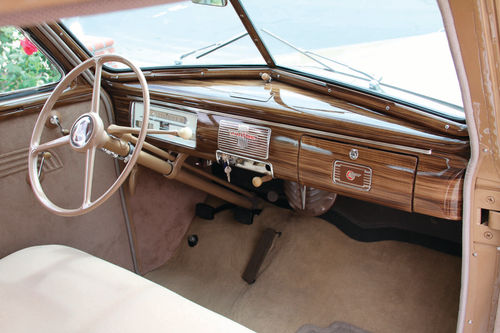
This low rpm/high torque approach made for good fuel economy as well. Dean’s Series 26 Deluxe model gets 21-plus miles per gallon on the highway even though it weighs 3050 pounds, and it can easily loaf along at around 2000 rpm at 50 miles an hour in high gear. The little 222-cubic-inch six has a red line of 3600 rpm and makes 85 horsepower, which means it wouldn’t compete well on today’s motorways, but in the old days it didn’t make much sense to push a car that hard.

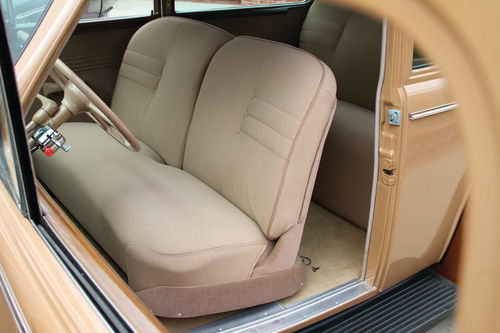
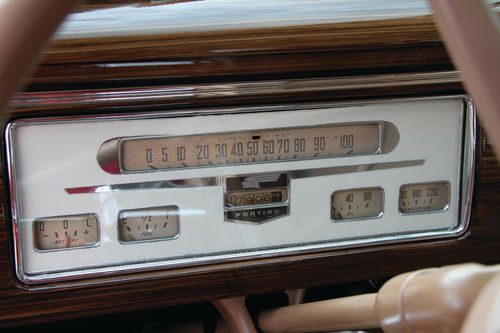
Another reason for keeping the revs down was that Pontiac’s—as well as Chevrolet’s—pistons were made of cast iron, so they would stress the connecting rods to the breaking point if you over-revved the engine routinely. And because of that, cast iron pistons may sound like a disadvantage, but having the pistons made of the same hard durable metal with the same expansion rate as the block meant that they could run them at tighter tolerances, making for less oil consumption. Also, Pontiac’s pistons wore like—you guessed it—iron, so overhauls were needed less frequently.
The valve train on Pontiac’s flatheads is also mechanical rather than hydraulic as was used on some more-expensive cars of the time, and it is simple, short and stout, so it lasted a long time too. Also, you didn’t have to worry as much about oil contamination as you did with hydraulic lifters. And most cars of the era did not come with oil filters, though such accessories were available as an extra-cost option. Pontiac also had a full-pressure oil system, and used thin shell insert bearings too, for extra durability.
One downside with inline flatheads, though, is that adjusting valves on them is a pain because you have to remove the front passenger-side wheel, take out the inner fender panel, and climb in under the front fender with the engine running and hot in order to do the deed. This was downright diabolical, but it didn’t have to be done often. On the other hand, overhead valves with long pushrods such as you found on Buicks and Chevrolets of the era were easier to adjust, but required regular attention to keep them gapped properly.
What a Difference 80 Years Can Make
Dean’s Grandma’s Pontiac added up to an altogether nice, inexpensive combination for the trips to church, Saturday shopping, and the Sunday drives for which it was intended. It met the transportation needs of the day well and with style. There were faster, flashier cars back then, including sixteen-cylinder Cadillacs that could loaf along at 80 miles per hour, and twelve-cylinder Packards that could stay with the Caddies if you were in that much of a hurry. But few could afford such frivolous things as the Depression was just ending.
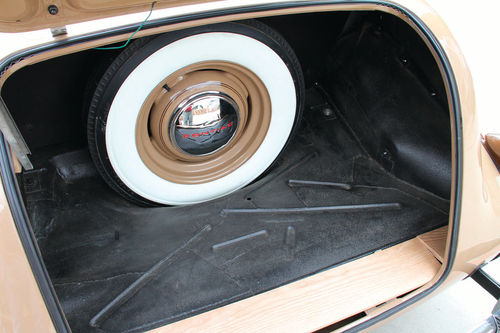
Modern cars are faster, safer, more entertaining and stop better than Dean’s 1939 Pontiac, but that too comes at a cost. The other day the battery in my modern car’s key went flat, so I had to have the car towed to the dealership. It cost me $71 to have it fixed because the key had to be “reprogrammed.” Also, a few months ago the GPS system went out on the car and that would have been around $2000 to fix if I hadn’t fronted up for the extended electronic warrantee that cost me $3500.
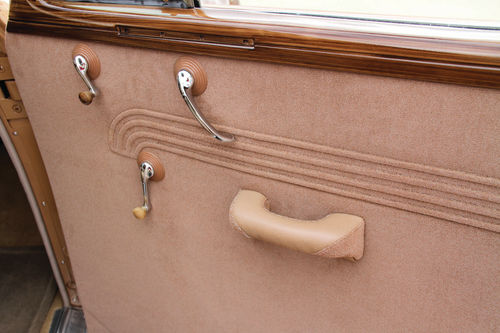

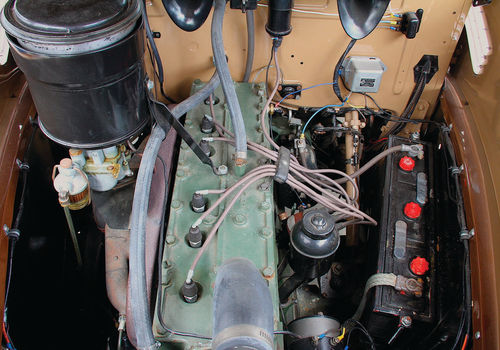
For Starks’ Pontiac a new key would cost a couple of bucks at the local hardware store even at today’s prices, and to figure out where I need to go, all I would need is a free map from the auto club. It would not fail me either unless I spilled coffee on it. In fact, about the only thing I would miss if I drove Dean’s Pontiac around town on a daily basis would be air conditioning, which Packard pioneered in 1940. Most days I would be just fine with the windows down and the wind wings open.
The Rise and Decline of Pontiac
Unfortunately you can’t buy a new Pontiac of any kind anymore. General Motors stopped making them in 2009 except for a final one produced in January 2010. It was a white G6 intended for fleet use. Pontiac went out with a whimper, not a bang. No press was even present for this sad turn of events.
That is ironic when you realize that Pontiac started out in 1924 as a less-expensive companion make for Oakland, much like at different times the Marquette was a companion make for Buick, Viking was a companion make for Oldsmobile, and LaSalle was a companion for Cadillac.
None of the other GM sister cars were successful for the company in the long run, but the Pontiac was such good value for the money that it ended up consuming Oakland, its host, by 1932. And then decades later, Pontiac transformed itself into General Motors’ performance car and was dazzlingly successful in the 1960s and ’70s.
But that was then. Today if you want a Pontiac, you will have to buy a good used one or restore your grandma’s car like Dean did. Starks, who owns Miller’s Brake and Frontend shop in Long Beach, California, has kept my cars on the straight and narrow for years. But on the weekends, to relax, what does he do? Well, some guys play golf, but Dean restores old cars!
All In the Family
Dean’s been working on a 1957 Ford Fairlane, but his grandmother’s Pontiac was special. He rode around in it as a kid, and it was something his grandma cherished. The car was mechanically re-buildable when he trailered it out from Kansas a few years ago, but it had fairly extensive rust in the body and a badly damaged interior that had to be replaced completely.
Dean did a body-off restoration down to the last Cotter pin, and spared no time or effort in finding all the proper period parts for it. He restored it exactly as his grandmother purchased it from the factory, without a radio and with only the correct trim for the car. No foolish gewgaws and furbelow like spotlights and fender skirts for Grandma and the car’s restoration obviously was a labor of love. The only thing Starks added was a period accessory blinker system so he wouldn’t have to roll the window down to signal on rainy days.
Road Time Can Be Enjoyable
The car is smooth, quiet and comfortable. You can move around in the seat, carry on a conversation, and enjoy the trip to your destination. With the windows down on a nice day, driving through the endless orange groves that once existed where Dean lives now, it would make for a relaxing excursion during which a picnic lunch in the park or by the roadside would have been delightful.
It is not fair to judge a car built in 1939 by our get-there-get-there-getthere, stressed-out criteria of today. No, Dean’s period Poncho is not fast, but it harks back to a day when we savored life a bit more, and conspicuous consumption and unnecessarily complicated electronic technology didn’t exist to thwart you and cost you dearly when you least expected it.
We roll silently back to Dean’s house and say our goodbyes, and then climb into my Hyundai, only to discover that its GPS system has fallen silent and won’t tell us how to get out of Dean’s suburban neighborhood. I can’t say I miss that punctilious female voice talking at me instead of to me though.
It is now rush hour, which means we will spend the next 45 minutes in stopand-go traffic trying to get home, but yearning for where we had just been, and wishing we could have stayed longer.
1939 Pontiac Deluxe Six Specs.
• Original Base Price…$850-$1000
• Weight…3050 lbs.
• Wheelbase…120 in.
Engine
• Type…6-cylinder inline L-head
• Displacement…222.4 cu. in.
• Bore & Stroke…3 7⁄16 x 4 in.
• Compression Ratio…6.2 - 1
• Brake Horsepower…85@3600 rpm
• Main Bearings…4
• Valve Lifters…Mechanical
• Lubrication…Pressure to all bearings

